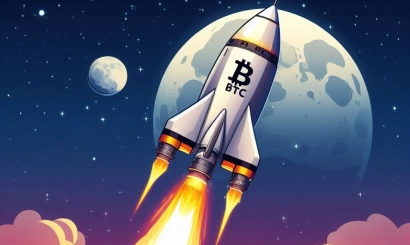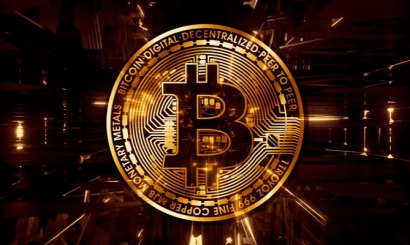What is PEPE cryptocurrency and how it set the trend for new memcoins
After PEPE was listed on major cryptocurrency exchanges, daily trading volumes of the token exceed $300 million
We tell you how a new token appeared on major cryptocurrency exchanges in three weeks of existence, led to dozens of peers, and who made money from it
In early April, Twitter account @pepecoineth appeared, the only entry in which was an image of a famous meme with Pepe the frog in a red cap with the inscription "Make Memecoins Great Again," referring to the presidential slogan of former U.S. President Donald Trump.
Two weeks later, the cryptocurrency token PEPE was launched, taking its name from a popular meme. Anonymous developers issued 420.69 trillion coins, and the token was traded on the decentralized exchange Uniswap.
Uniswap is a decentralized financial protocol on the Ethereum blockchain for exchanging and trading crypto-assets based on smart contracts. Trading participants retain relative anonymity by using their Ethereum wallet for authorization. Because every token transfer takes place directly in the Ethereum blockchain, users have to pay a transaction fee, which increases dynamically depending on the load on the network.
Influencers on Twitter and themed messenger channels Telegram and Discord picked up on the discussion of PEPE, and just a day after its debut, its price rose by more than 900%. In less than three weeks, memcoin's market capitalization exceeded $1.6 billion. At the time of publication, the token is among the top three memcoins, second only to Dogecoin (DOGE) and Shiba Inu (SHIB).
High demand
This surge led to dozens of new memcoins popping up fairly quickly, and those that turned out to be in high demand also skyrocketed in value by tens or even hundreds of percent. Many of these tokens lack liquidity, which means that traders have limited ability to buy and sell them close to the market rate. Because of this, tokens are susceptible to sharp price fluctuations - any one of the relatively large buy orders pushes their prices higher and vice versa. This is taken advantage of by professional traders whose bots can track such bids to their completion and advance their own, outpacing other players.
The PEPE token was initially traded only on decentralized exchanges (DEX), whose increased trading volume leads to an increase in the number of transactions on the Ethereum blockchain. During the hype surrounding PEPE and other meme tokens, activity on Uniswap and its analogs grew to the 2021 mark, when Bitcoin and the crypto market as a whole reached historic price highs. This, in turn, led to an increased load on the network and, as a consequence, a strong increase in Ethereum commissions - buying memcoins on DEX or any other direct interaction with the network can cost up to $50 in ETH cryptocurrency.
High commissions as well as technical peculiarities of decentralized exchanges partially restrained the influx of ordinary retail traders, but realizing the scale of excitement, traditional crypto exchanges started to announce PEPE listings. Among them are OKX, Bybit, KuCoin, Poloniex, Bitget and others. BitMEX was the first exchange to launch trading in perpetual PEPE futures with up to 50x leverage.
The world's largest cryptocurrency exchange, Binance, held back for a while. But at the beginning of May, its head Changpeng Zhao said during a question-and-answer session with subscribers that although he himself does not understand memcoins and has never traded them, if there is demand, his platform always meets users. It became clear in the cryptocurrency community that listing PEPE on Binance was a matter of time, and the exchange did add the token a few days later.
According to CoinGecko, PEPE trading volumes from May 9 to 10 exceeded $420 million, despite the token's price drop. The service's statistics also show that trading volumes quickly shifted from Uniswap to Binance after the latter listed the memcoin. More than $160 million worth of PEPE trades were made on Binance in a day, compared to $55 million on Uniswap. The accessible interface and much lower fixed commissions obviously played a role in this. According to analytics service DEXTools, the number of unique PEPE token holders exceeded the 100,000 mark on May 10.
Not just a meme
In 2005, illustrator Matt Furey released a webcomic called Boy's Club that featured a frog named Pepe. The character appeared frequently in Furey's work, then migrated to the internet and spawned thousands of memes. Fury himself, answering the questions of his subscribers, said he knew nothing about the token and ironically called himself a "Dogecoin-maximalist".
Dogecoin, created in late 2013 by developers Billy Marcus and Jackson Palmer, was the first memcoin to appear on the market. According to them, they created the coin as a joke, and its name was a reference to the popular meme "doge" with a shiba-inu dog named Kabosu. Unlike Bitcoin's payment function or Ethereum's decentralized application ecosystem, Dogecoin initially had no purpose beyond irony for the nascent crypto market of the time.
That didn't stop the coin from skyrocketing in popularity, helped greatly by Tesla CEO Elon Musk. According to CoinMarketCap, Dogecoin has a market capitalization in excess of $10 billion. After DOGE's meteoric rise in 2021, a flood of memcoins flooded the market, including Shiba Inu, another dog-inspired token that is among the top 20 largest crypto-assets.
The activity and excitement around PEPE is partly reminiscent of the recent rise of BONK, another memcoin with a shiba inu as a symbol, launched earlier this year on the Solana blockchain. During the New Year holidays, the token similarly soared in price, provoked a surge of abnormal activity on decentralized exchanges, and was added to the listing of major trading floors, including Bybit and Huobi. After the January highs, the price of BONK never returned to its peak value and gradually declined despite the overall growth of the market.
"The dogs have had their day," PEPE developers write, "it's time for Pepe to take over. The creators of the token are keeping it social media anonymous, and the coin's website lacks any contact information. The first press release mentioning PEPE was published on April 19 on behalf of David Costla. Another press release about the creation of another memcoin, DanGPT, the "daring twin of ChatGPT," is signed by the same name. The developers have ignored attempts by journalists to contact them through any available channels.
When Elon Musk posted a meme on Twitter with an image of NFT from Milady's collection, the price of the Milady Meme Coin (LADYS) token, created the day before, rose by almost 120 times. The coin's capitalization reached $136 million in less than a day. Blockchain transaction researchers noticed that some Ethereum wallet owners, who earned hundreds of thousands of dollars on the rise of PEPE, were also buying up LADYS before the price of the new meme token surged.
- IRS files $44 billion in claims against FTX Group
- Investment idea: To make money on the cryptocurrency BNB
- Bitcoin forecast for the week
- OKX cryptocurrency exchange tightened customer verification rules
- Former Coinbase employee received 2 years in prison for insider trading
- 250MW mining centers to be built in UAE desert climate
- Bitcoin surpassed $28 thousand after the release of U.S. inflation data







